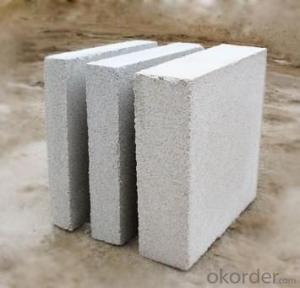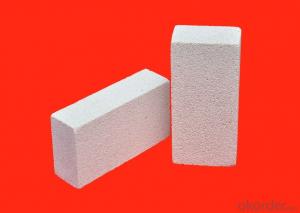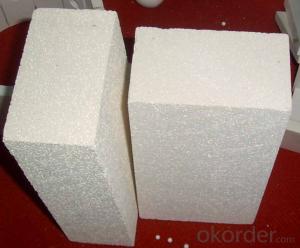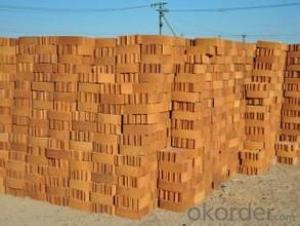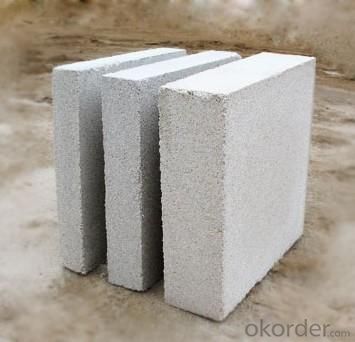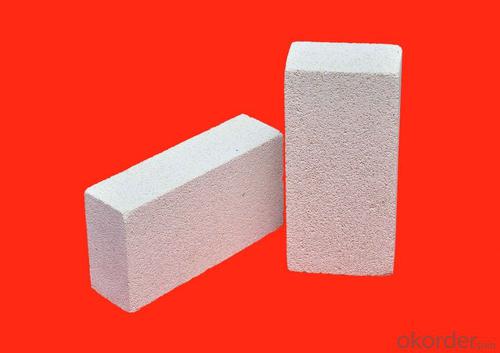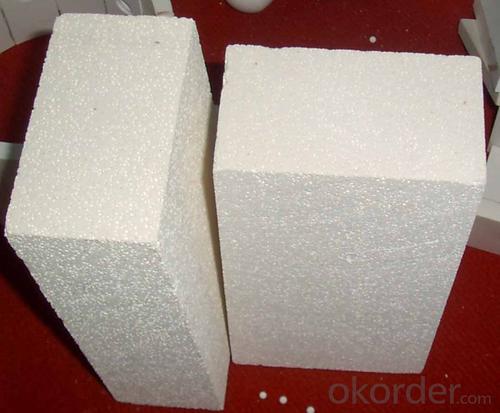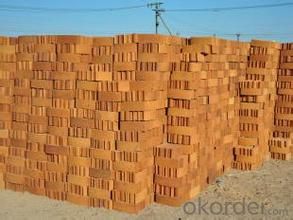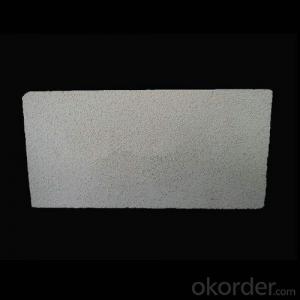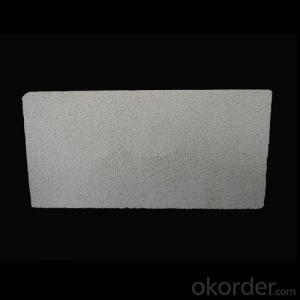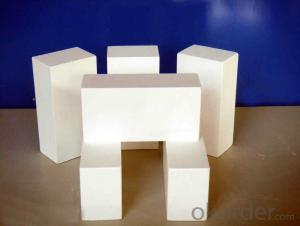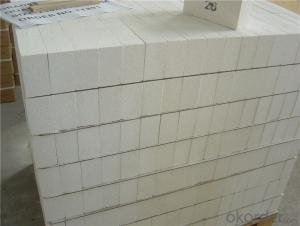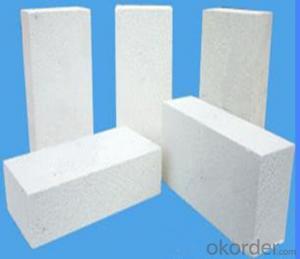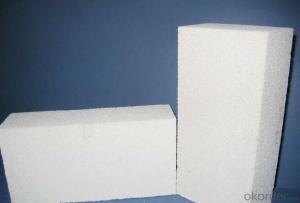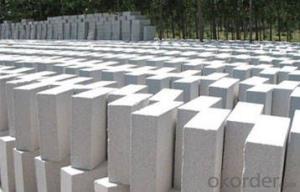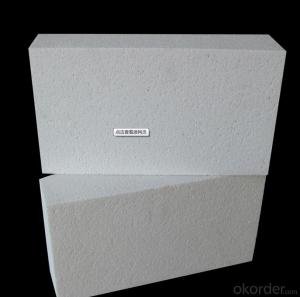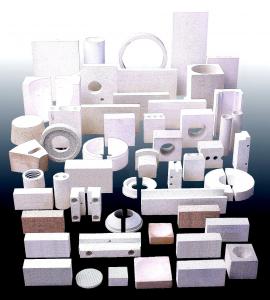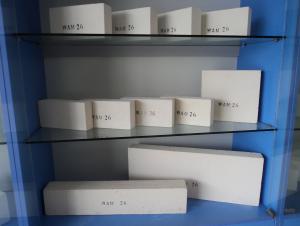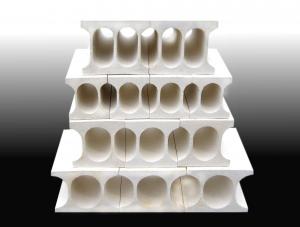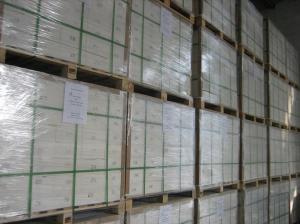Insulating Fire Brick - Refractory GJM Mullite Insulation Brick B-3
- Loading Port:
- Shanghai
- Payment Terms:
- TT OR LC
- Min Order Qty:
- 10 m.t.
- Supply Capability:
- 1000 m.t./month
OKorder Service Pledge
OKorder Financial Service
You Might Also Like
Specifications
mullite insulation brick
1. Low thermal conductivity
2.High hot compressive strength
3.Perfect Energy saving
Refractory GJM Mullite Insulation Brick B-3
Light weight mullite insulation furnace bricks refractory for sale
Advantage
1. Low thermal conductivity
2.High hot compressive strength
3.Perfect Energy saving
Refractory GJM Mullite Insulation Brick B-3
Description:
Lightweight mullite kiln bricks refractory for sale are made from good quality and superpure raw materials, with strictly classified fillings according to their grades. These fillings can form a uniform pore structure after burnt during the process of manufacture. Each grade of products has unique design to meet different thermal, physical and chomical demands.
Application:
Refractory GJM Mullite Insulation Brick B-3
Mullite insulation furnace bricks refractory material can be used in linings or heat-insulating materials of the industries, such as, ethylene pyrolysis furnaces, tubular furnaces, reforming furnaces of synthetic ammonia, gas generators and high-temperature shullte kilns, etc
Refractory GJM Mullite Insulation Brick B-3
Mullite Insulation furnace refractory material can be used as working lining, where contact with flames directly. This kind of brick can save the kiln energy very much
Refractory GJM Mullite Insulation Brick B-3
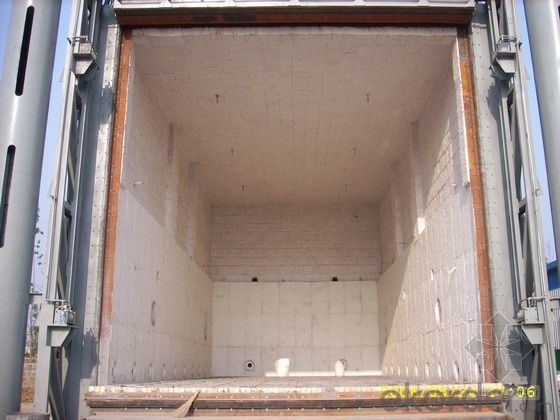
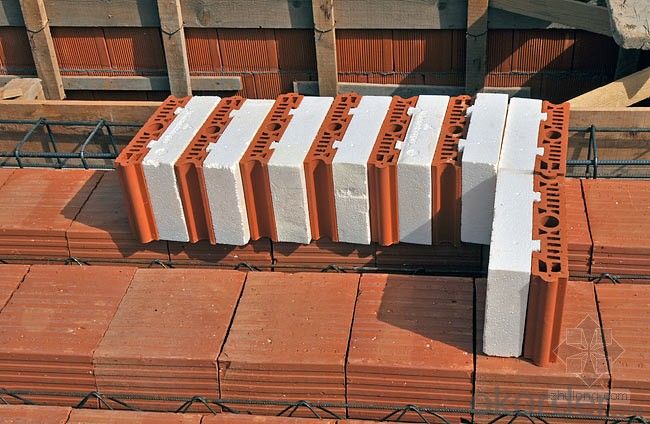
- Q: Are insulating fire bricks suitable for use in glass melting furnaces?
- Insulating fire bricks can be suitable for use in glass melting furnaces, depending on the specific requirements of the furnace and the type of glass being melted. Insulating fire bricks are made from lightweight materials with low thermal conductivity, which makes them effective at retaining heat and reducing energy loss in the furnace. This can help improve the energy efficiency of the furnace and reduce operating costs. However, it is important to consider the temperature and atmosphere inside the glass melting furnace when choosing the type of insulating fire bricks. Glass melting furnaces operate at extremely high temperatures, often exceeding 1500°C (2732°F). Some insulating fire bricks may not be able to withstand such high temperatures and could degrade or even melt under these conditions. Additionally, the atmosphere inside the glass melting furnace can have an impact on the suitability of the insulating fire bricks. Some types of insulating fire bricks may react with certain gases or chemicals present in the furnace atmosphere, leading to degradation or contamination of the glass being melted. Therefore, it is crucial to select insulating fire bricks that are compatible with the specific atmosphere and conditions inside the glass melting furnace. In summary, insulating fire bricks can be suitable for use in glass melting furnaces, but careful consideration must be given to their temperature resistance and compatibility with the furnace atmosphere. Consulting with experts or suppliers who specialize in refractory materials for glass melting furnaces can help ensure the appropriate selection of insulating fire bricks for optimal furnace performance and glass quality.
- Q: What materials are used to make insulating fire bricks?
- Insulating fire bricks are made from a variety of materials that possess high thermal insulation properties. The most common material used in the production of these bricks is a type of clay known as kaolin clay. This clay is mixed with other additives such as alumina, silica, and zirconium to enhance its insulating properties and increase its resistance to high temperatures. In addition to clay, other materials like sawdust, vermiculite, perlite, and calcium silicate are also sometimes added to the mixture to further improve the insulation capabilities of the bricks. Overall, the combination of these materials allows insulating fire bricks to have low thermal conductivity, high heat resistance, and excellent insulation qualities, making them suitable for a wide range of industrial and domestic applications.
- Q: Can insulating fire bricks be used in power plants?
- Indeed, power plants have the capability to utilize insulating fire bricks. These bricks, also referred to as refractory bricks, are specifically designed to endure extreme temperatures and offer exceptional thermal insulation. They find extensive usage in a wide range of industrial settings, including power plants. The combustion of fossil fuels or the process of nuclear fission within power plants generates a substantial amount of heat. In order to ensure efficient operations and prevent heat loss, power plants employ insulating fire bricks to line the walls, floors, and ceilings of furnaces, boilers, and other areas that experience high temperatures. Insulating fire bricks possess a low thermal conductivity, thereby effectively reducing heat transfer. This serves to conserve energy and enhance the overall efficiency of power plants. Furthermore, these bricks exhibit high resistance to thermal shock, enabling them to withstand abrupt temperature changes without sustaining any cracks or fractures. In addition, insulating fire bricks are lightweight and simple to install, making them an ideal choice for power plant applications. They also possess resistance to chemical corrosion, which is crucial in power plants where various gases and chemicals are present. To summarize, insulating fire bricks are an appropriate option for power plants due to their ability to endure high temperatures, offer exceptional thermal insulation, and resist thermal shock and chemical corrosion. Incorporating these bricks into power plant applications serves to enhance energy efficiency and maintain optimal operating conditions.
- Q: Can insulating fire bricks be used in refractory cement?
- Yes, insulating fire bricks can be used in refractory cement. Insulating fire bricks are designed to provide thermal insulation in high-temperature applications, while refractory cement is used to create a strong and durable bond between bricks or other refractory materials. By using insulating fire bricks in conjunction with refractory cement, the overall thermal efficiency and insulation properties of the structure can be improved. This can help to reduce heat loss and increase the overall efficiency of the system. However, it is important to carefully follow the manufacturer's instructions and guidelines when using insulating fire bricks and refractory cement together to ensure proper installation and performance.
- Q: Can insulating fire bricks be used in paper mills?
- Yes, insulating fire bricks can be used in paper mills. Insulating fire bricks are commonly used in industries that require high-temperature insulation, such as steel, glass, and ceramics. In paper mills, where processes like drying, heating, and burning occur, insulating fire bricks can be used to line kilns, furnaces, and other equipment to provide insulation and prevent heat loss. These bricks have excellent thermal insulation properties and can withstand high temperatures, making them suitable for use in paper mills where heat is a crucial component of the manufacturing process. Additionally, insulating fire bricks are lightweight and have low thermal conductivity, allowing for efficient heat retention and energy savings.
- Q: What is the recommended thickness of insulating fire bricks for optimal insulation?
- The recommended thickness of insulating fire bricks for optimal insulation varies depending on the specific application and desired level of insulation. However, a typical range for insulating fire bricks is between 2.5 to 4 inches in thickness. It is important to consult with a professional or refer to specific guidelines to determine the ideal thickness for your specific insulation needs.
- Q: Are insulating fire bricks easy to handle and install?
- Insulating fire bricks are generally easy to handle and install. They are lightweight, making them easy to transport and carry around. Additionally, their shape and size are designed to be user-friendly, allowing for easy manipulation and installation. Most insulating fire bricks come with pre-drilled holes or grooves, which further simplifies the installation process. Moreover, these bricks can be easily cut or shaped to fit specific dimensions or requirements, making them highly versatile. Overall, insulating fire bricks are considered easy to handle and install, even for individuals with limited experience or knowledge in masonry work.
- Q: Are insulating fire bricks resistant to fire?
- Yes, insulating fire bricks are indeed resistant to fire. These bricks are specially designed and manufactured to withstand high temperatures and provide excellent insulation properties. Insulating fire bricks are made from lightweight refractory materials, such as ceramic fibers or expanded clay, which have low thermal conductivity and high melting points. This allows them to effectively retain heat and protect against extreme temperatures. They are commonly used in applications where high temperatures are present, such as in furnaces, kilns, and fireplaces. Overall, insulating fire bricks are specifically engineered to be highly fire resistant and are an ideal choice for insulating against heat and preventing the spread of fire.
- Q: The difference between ordinary and diatomite brick refractory brick
- Refractory brick belongs to a large class, according to different materials used are divided into: high alumina brick, dolomite brick, magnesia chrome brick, magnesia spinel brick, phosphate brick, carborundum brick, brick, mullite bricks etc..
- Q: Can insulating fire bricks be used in the construction of smelting crucibles?
- Yes, insulating fire bricks can be used in the construction of smelting crucibles. Insulating fire bricks are designed to withstand high temperatures and provide excellent insulation. They are commonly used in applications that require heat retention and protection, such as kilns and furnaces. Smelting crucibles, which are used to melt and refine metals, also require materials that can withstand extreme temperatures. Insulating fire bricks are an ideal choice for constructing smelting crucibles because they can help maintain a consistent temperature within the crucible and prevent heat loss. Additionally, their insulating properties can reduce energy consumption and increase the efficiency of the smelting process.
Send your message to us
Insulating Fire Brick - Refractory GJM Mullite Insulation Brick B-3
- Loading Port:
- Shanghai
- Payment Terms:
- TT OR LC
- Min Order Qty:
- 10 m.t.
- Supply Capability:
- 1000 m.t./month
OKorder Service Pledge
OKorder Financial Service
Similar products
Hot products
Hot Searches
Related keywords
